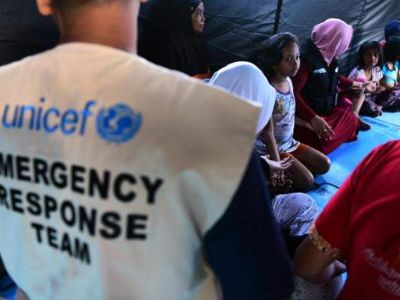Cover image: © UNICEF/UN08247/Khuzaie
Being prepared is a precondition for responding quickly and effectively to a humanitarian crisis. A good understanding of Emergency Response Preparedness (ERP) is crucial for humanitarian actors, including clusters, in order to proactively prepare for crises and to effectively respond from early onset of emergencies.
Learning objectives
By the end of this module, you will be able to:
- Appreciate main goals of the ERP approach, understand expected results and outputs of ERP planning.
- Know about the international standards guiding the ERP approach and list the components of the IASC ERP approach.
- Determine the different steps of ERP planning, understand how ERP and other steps of the HPC are interlinked and recognize who is responsible for ERP.
Audience
This module is an intermediary-level course aimed at anyone who is interested in furthering their skills and knowledge in nutrition cluster coordination in humanitarian contexts, and who needs to coordinate and collaborate with the humanitarian architecture on this topic. It is part of the recommended learning path for national nutrition cluster coordinators aiming to progress to senior level roles.
Length
It should take you about 45 minutes to complete this self-paced course.
Methodology
This course is composed of a single short self-paced animated module, including various examples and activities.
Structure
Introduction
5 min
Lesson 1: What is Emergency Response Preparedness (ERP)?
10 min
Lesson 2: How to undertake ERP planning?
15 min
Lesson 3: Aligning ERP and other workstreams
10 min
Summary
5 min
Suggested prior learning
The CLA’s role and responsibilities within the cluster approach
Characteristics of a nutrition cluster
Understanding and working through existing nutrition coordination platforms in humanitarian contexts
Contact details
For technical issues, you can contact https://www.nutritioncluster.net/Ask_question
